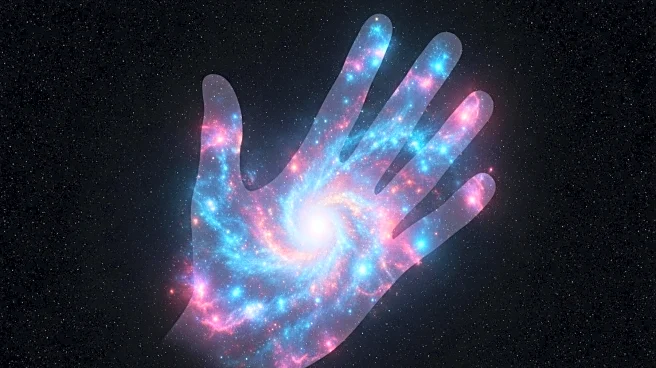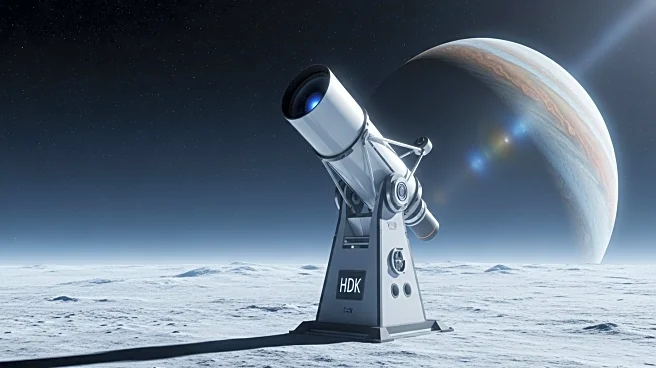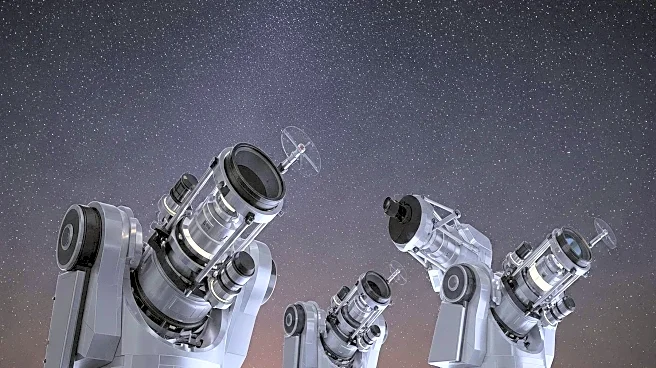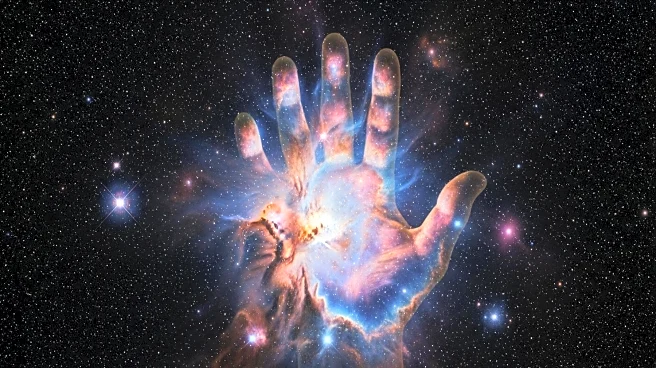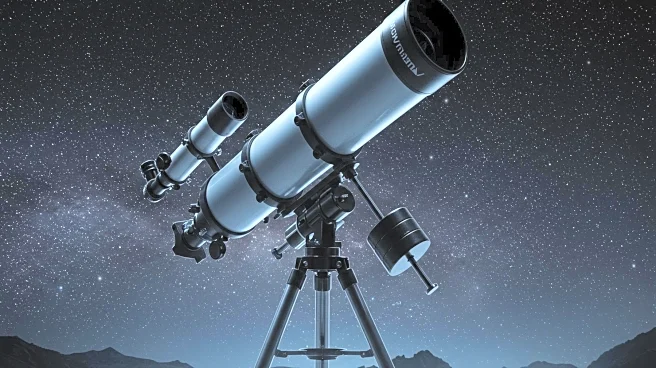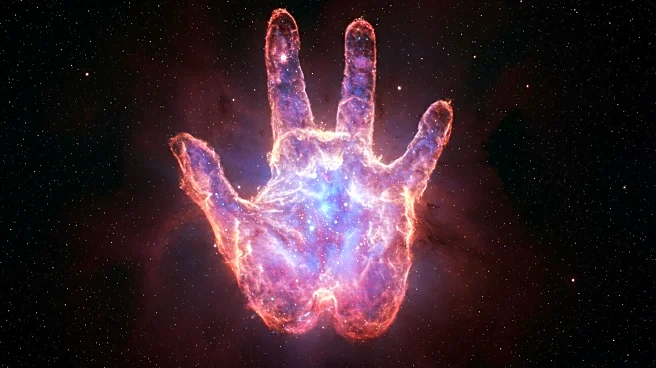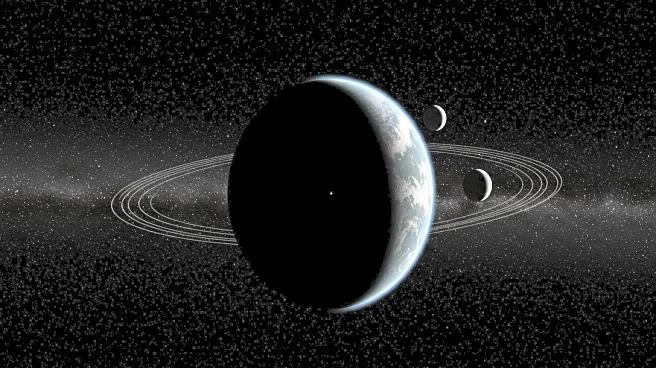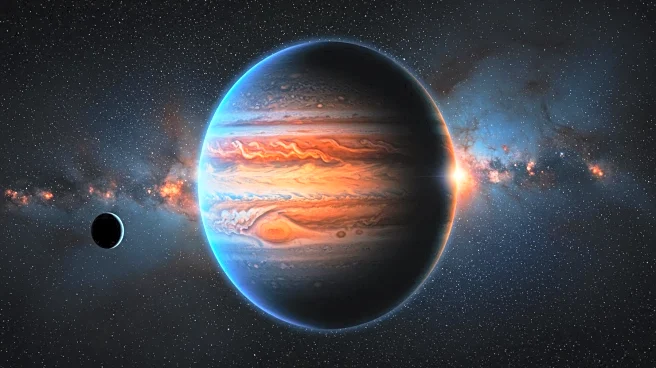Rapid Read • 6 min read
NASA's Chandra X-ray Observatory has provided detailed observations of the 'Hand of God' nebula, a pulsar wind nebula surrounding the pulsar PSR B1509-58. The nebula's distinct hand-like shape is sculpted by the pulsar's intense magnetic fields, which accelerate high-energy particles outward into space. These particles form powerful winds that shape the surrounding nebula, creating complex structures observable in various wavelengths, including X-rays and radio waves. The study highlights the role of magnetic fields in particle acceleration and nebula formation, offering insights into the physical conditions around pulsars.
AD
The discovery and study of the 'Hand of God' nebula provide valuable insights into the mechanisms of pulsar wind nebulae and the role of magnetic fields in shaping cosmic structures. Understanding these processes is crucial for advancing astrophysical models and theories related to particle interactions and nebula formation. The research underscores the importance of multiwavelength observations in astrophysics, allowing scientists to develop comprehensive models of cosmic phenomena and potentially revealing new aspects of the universe's behavior.
Continued research and observations are expected to further unravel the mysteries of pulsar wind nebulae and the role of magnetic fields in cosmic phenomena. Scientists aim to refine models of particle interaction and nebula formation, potentially leading to new discoveries in astrophysics. Collaborative efforts across different telescopic sources will enhance the understanding of these complex structures, contributing to the broader field of cosmic research.
AD
More Stories You Might Enjoy


